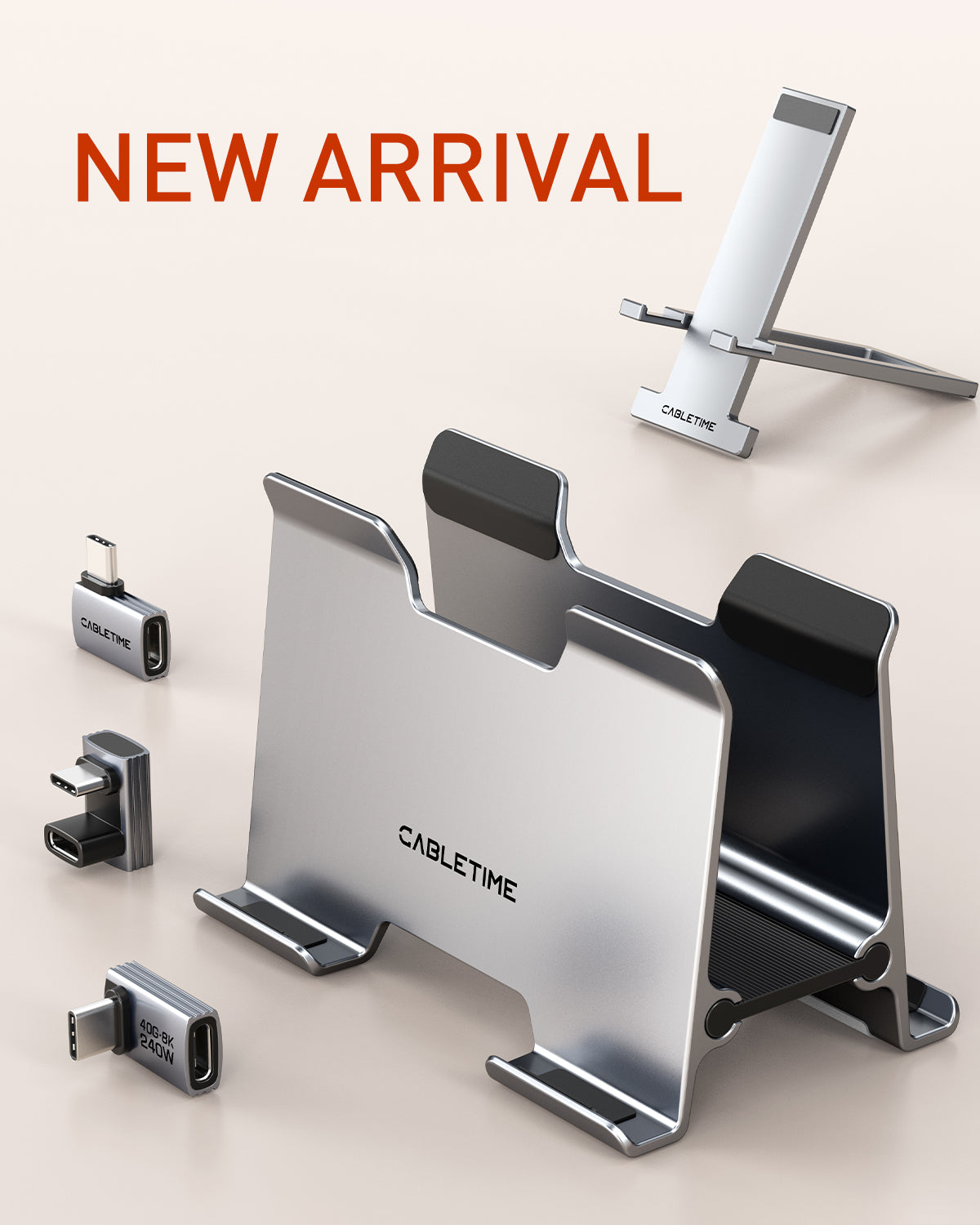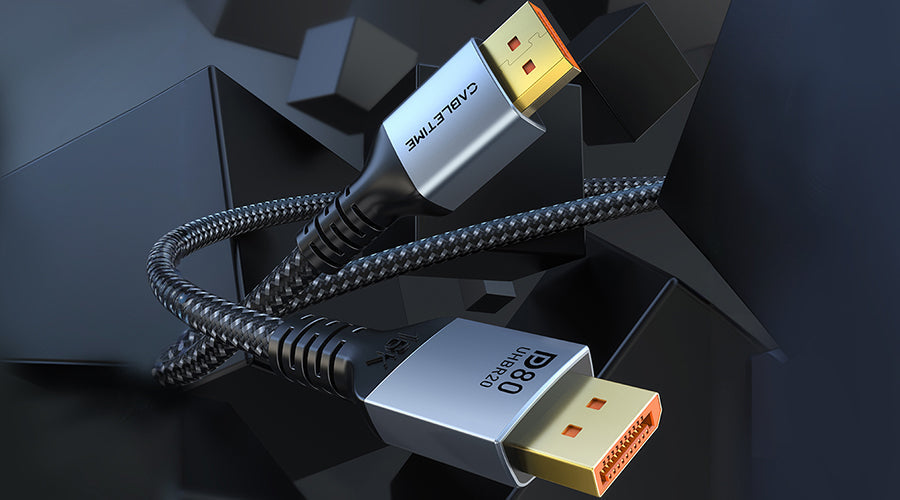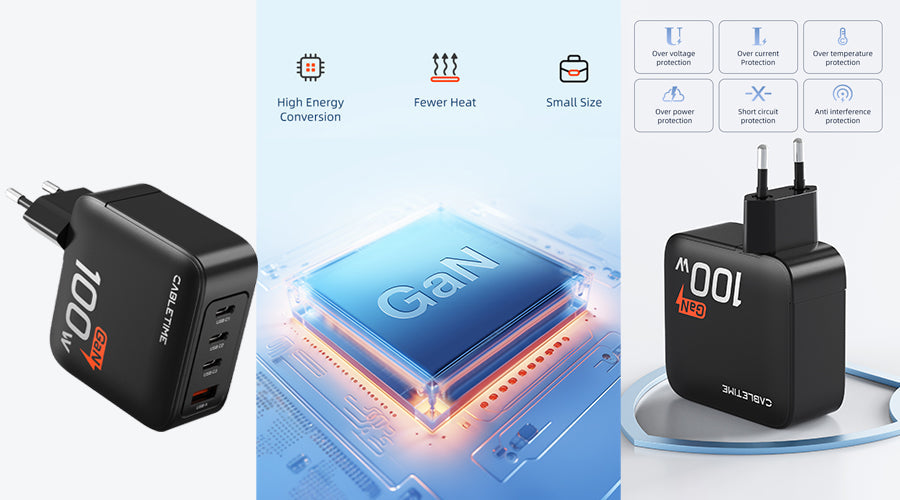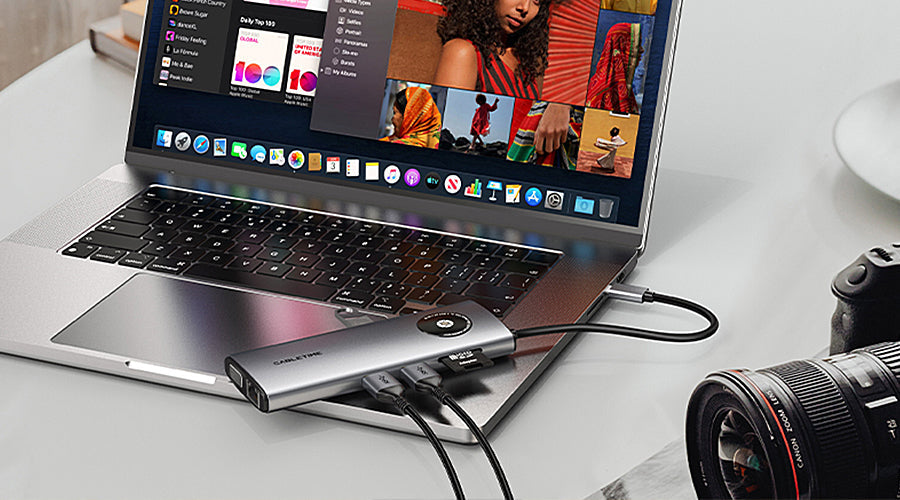Active vs. Passive Cables and DisplayPort Adapters is a topic that relates to the different kinds of adapters that can be used to connect DisplayPort or Mini DisplayPort signals from a video source to a VGA, DVI or HDMI monitor. DisplayPort is a digital video interface standard that was developed by a consortium of PC and circuit board manufacturers in 2006. HDMI is another digital video interface standard that was developed by a group of display manufacturers in 2003. Both standards can transmit high-definition video and audio, but they have some differences in features and compatibility.
An active adapter, on the other hand, requires external power or a chip to perform the conversion. It can convert both single-mode and dual-mode DisplayPort output, so it does not depend on the video source to support DP++. An active adapter can support dual-link DVI or HDMI monitors, which have higher resolution and bandwidth than single-link monitors. It can also work with multiple monitors and any graphics card. In this article, we will shortly overview the basic knowledge of passive and active cables and adapters and how to choose the best ones for your needs.

Definition and Difference between Active Cables and Passive Cables
Characteristics and working principles of Active Cables
Active cables are cables that have electronic components embedded in them, such as amplifiers, repeaters, or equalizers. These components help to boost, regenerate, or reshape the signal that travels through the cable, improving the quality and reliability of the transmission. Active cables are usually used for longer distances, higher bandwidths, or more complex signals, such as HDMI, USB, or DisplayPort. Active cables require external power, either from the source device, the destination device, or a separate power supply.
Characteristics and working principles of Passive Cables
Passive cables do not have electronic components. They simply carry the signal from one end to the other without modifying it in any way. Passive cables are usually used for shorter distances, lower bandwidths, or simpler signals, such as Ethernet, audio, or coaxial. They do not require external power, as they rely on the power of the signal itself.
Comparison between Active Cables and Passive Cables
The main difference between active and passive cables is the presence or absence of electronic components, which affects their performance, cost, and compatibility. Here are some of the advantages and disadvantages of each type of cable:
Types and Functions of DisplayPort Adapters
The Role of DisplayPort Adapters
DisplayPort adapters are devices that convert DisplayPort signals to other types of signals, such as HDMI, VGA, or DVI. They are used to connect DisplayPort sources, such as laptops, desktops, or gaming consoles, to displays that do not have a DisplayPort input, such as monitors, TVs, or projectors. DisplayPort adapters can also convert other types of signals to DisplayPort, such as HDMI to DisplayPort, but this is less common.

Characteristics of different types of DisplayPort Adapters
There are different types of DisplayPort adapters, depending on the type of signal or connector they convert to. Some of the most common ones are:
DisplayPort to HDMI adapters:
These adapters convert DisplayPort signals to HDMI signals, which are widely used for high-definition video and audio. They are compatible with HDMI displays and devices like TVs, monitors, or speakers. They can sustain resolutions up to 4K at 60Hz, depending on the version of the adapter and the source device.
DisplayPort to VGA adapters:
These adapters convert DisplayPort signals to VGA signals, which are analog and low-resolution. They are compatible with VGA displays and devices, such as older monitors, projectors, or cameras. They can support resolutions up to 1920x1200 at 60Hz, depending on the adapter and the source device.
DisplayPort to DVI adapters:
These adapters convert DisplayPort signals to DVI signals, which are digital and high-resolution. They are compatible with DVI displays and devices, such as monitors, projectors, or graphics cards. They can support resolutions up to 2560x1600 at 60Hz, depending on the adapter and the source device.

How do you choose the right DisplayPort Adapters?
The choice of the right DisplayPort adapter depends on several factors, such as:
- The type of signal or connector you want to convert to: You should choose the adapter that matches the input of your display or device, such as HDMI, VGA, or DVI.
- The resolution and refresh rate you want to achieve: Depending on the capabilities of your source device, your display, and the adapter itself, you should choose the adapter that can support the highest resolution and refresh rate possible.
- The quality and reliability of the adapter: You should choose an adapter that has good reviews, ratings, and certifications, such as CE, FCC, or RoHS. You should also avoid cheap or counterfeit adapters, as they may not work properly or damage your devices.
Usage Scenarios of Active Cables and DisplayPort Adapters
Suitable environments and advantages of Active Cables
Active cables are suitable for environments where you need to transmit high-quality, high-bandwidth, or complex signals over long distances, such as:
- Home theatre systems: You can use active HDMI cables to connect your Blu-ray player, gaming console, or any video streaming device to your TV or projector and enjoy 4K video and surround sound without any signal loss or interference.
- Professional audio and video production: You can use active USB cables to connect your microphone, camera, or mixer to your computer and record or edit high-fidelity audio and video without any latency or noise.
- Gaming and VR: You can use active DisplayPort cables to connect your graphics card to your monitor or VR headset and experience immersive gaming and VR with high-resolution and high-refresh-rate graphics.
The main advantages of active cables are:
- They can support longer distances, higher bandwidths, or more complex signals than passive cables without compromising the quality and reliability of the transmission.
- They can overcome the limitations of the source or destination devices, such as the maximum cable length, the maximum resolution, or the maximum refresh rate, by boosting, regenerating, or reshaping the signal.
- They can reduce the number of cables and adapters needed by combining multiple signals or connectors into one cable, such as active Thunderbolt cables that can carry power, data, and video in one cable.
Factors to consider when choosing DisplayPort adapters for specific applications
DisplayPort adapters are useful for applications where you need to connect DisplayPort sources to non-DisplayPort displays or devices, such as:
- Business presentations: You can use DisplayPort to VGA adapters to link your laptop to a projector or a monitor and display your slides or documents on a larger screen.
- Entertainment and media: You can use DisplayPort to HDMI adapters to connect your laptop, desktop, or gaming console to a TV or a speaker and watch movies, shows, or games on a bigger screen with better sound.
- Multi-monitor setups: You can use DisplayPort to DVI adapters to connect your laptop or desktop to multiple monitors and extend or duplicate your desktop across different screens.

Compatibility Issues of Passive Cables and DisplayPort Adapters
Passive cables are not always compatible between different devices or standards, as they may have different specifications, requirements, or features. Some of the common compatibility issues of passive cables are:
Cable length:
Passive cables have a maximum cable length beyond which the signal may degrade or drop. The full cable length relies on the type of cable, the type of signal, and the quality of the cable. For example, passive HDMI cables have a maximum length of about 15 meters, while passive Ethernet cables have a full length of about 100 meters.
Resolution and refresh rate:
Passive cables have a maximum resolution and refresh rate depending on the type of cable, the type of signal, and the version of the standard. For example, passive HDMI cables can support up to 4K at 30Hz, while passive DisplayPort cables can support up to 8K at 60Hz.
Features and functions:
Passive cables may not support some features or functions that are available in the source or destination devices or standards, such as audio return channel, Ethernet channel, or HDR. For example, passive HDMI cables may not support ARC or HDR, while passive DisplayPort cables may not support MST or G-Sync.
Compatibility challenges and solutions for DisplayPort Adapters
DisplayPort adapters are not always compatible with all devices or standards, as they may have different specifications, requirements, or features. Some of the common compatibility challenges and solutions for DisplayPort adapters are:
Signal direction:
DisplayPort adapters have a specific signal direction, meaning they can only convert from DisplayPort to another type of signal or vice versa. They cannot convert between two non-DisplayPort signals, such as HDMI to VGA. For example, a DisplayPort to HDMI adapter can only connect a DisplayPort source to an HDMI display but not an HDMI source to a DisplayPort display. To solve this challenge, you need to use the correct type of adapter for your signal direction or use a bidirectional adapter that can convert both ways.
Active or passive:
DisplayPort adapters can be either active or passive, depending on whether they have electronic components in them or not. Active adapters can support higher resolutions, refresh rates, or features than passive adapters, but they also require external power, cost more, and may have compatibility issues with some devices or standards. For example, an active DisplayPort to HDMI adapter can support 4K at 60Hz, but it may not work with some older HDMI devices or standards. To solve this challenge, you need to check the specifications and requirements of your source device, your display, and your adapter and choose the appropriate type of adapter for your needs.

Dual-mode or single-mode:
DisplayPort adapters can be either dual-mode or single-mode, depending on whether they can support both DisplayPort and HDMI signals or not. Dual-mode adapters can convert DisplayPort signals to HDMI signals without any active components as long as the source device supports dual-mode. Single-mode adapters can only convert DisplayPort signals to other types of signals with active components, and they do not support HDMI signals.
How to Choose Cables and Adapters Based on Needs?
Assessing usage requirements: when to choose Active Cables or Passive Cables
The choice of active or passive cables depends on your usage requirements, such as:
- The type of signal or connector you need to transmit: You should choose the cable that matches the output of your source device and the input of your destination device, such as HDMI, USB, or DisplayPort.
- The distance you need to cover: You should choose the cable that can support the distance you need to cover without degrading or dropping the signal. Active cables can support longer distances than passive cables, but they also require external power.
- The bandwidth you need to support: You should choose the cable that can support the bandwidth you need to support, depending on the type and quality of the data or signal you want to transmit. Active cables can support higher bandwidths than passive cables, but they also cost more and may have compatibility issues.
- The features or functions you want to enable: You should choose the cable that can support the features or functions you want to enable, such as audio return channel, Ethernet channel, or HDR. Active cables can support more features and functions than passive cables, but they may not work with some devices or standards.
Assessing usage requirements: When should you choose DisplayPort adapters?
The choice of DisplayPort adapters depends on your usage requirements, such as:
- The type of signal or connector you want to convert to: You should choose the adapter that matches the input of your display or device, such as HDMI, VGA, or DVI.
- The resolution and refresh rate you want to achieve: You should choose the adapter that can support the highest resolution and refresh rate possible, depending on the capabilities of your source device, your display, and the adapter itself.
- The quality and reliability of the adapter: You should choose the adapter that has good reviews, ratings, and certifications, such as CE, FCC, or RoHS. You should also avoid cheap or counterfeit adapters, as they may not work properly or damage your devices.
Best practices: Combining the use of Active/Passive Cables and DisplayPort Adapters
Some best practices for combining the use of active/passive cables and DisplayPort adapters are:
- Use the shortest and highest quality cable possible to reduce signal loss and interference.
- Use the appropriate type of adapter for your signal direction, active or passive, and dual-mode or single-mode, to ensure the compatibility and performance of the transmission.
- Use the same brand or manufacturer for your cables and adapters to avoid any potential conflicts or issues.
- Test your cables and adapters before using them to make sure they work as expected and do not cause any problems.
Introducing several optional products from Cabletime
Cabletime is a leading manufacturer and supplier of cables and adapters with over 20 years of experience and expertise in the industry. Cabletime offers a wide range of products for various applications and needs, such as:
Active HDMI cables:
These cables can transmit high-definition video and audio signals over long distances, up to 100 meters, without any signal loss or degradation. They are compatible with HDMI 2.0 and 4K at 60Hz, and support features such as ARC, HDR, and HDCP 2.2. They are ideal for home theater systems, professional audio and video production, and gaming and VR.

Passive DisplayPort cables:
These cables can transmit high-resolution video and audio signals over short distances, up to 15 meters, without any external power or active components. They are compatible with DisplayPort 1.4 and 8K at 60Hz and support features such as MST, G-Sync, and FreeSync. They are ideal for multi-monitor setups, gaming and VR, and business presentations.

DisplayPort to HDMI adapters:
These adapters can convert DisplayPort signals to HDMI signals, and connect DisplayPort sources to HDMI displays or devices. They are compatible with DisplayPort 1.4 and HDMI 2.0, and sustain resolutions up to 4K at 60Hz. They are active and dual-mode, meaning they can work with both DisplayPort and HDMI signals, and do not require external power. They are ideal for entertainment and media, business presentations, and gaming and VR.

Conclusion
In conclusion, passive and active cables and adapters are two types of devices that are used to connect and transmit signals between different devices and displays. They differ in their characteristics, working principles, and performance and have their own advantages and disadvantages. The choice of the best cables and adapters depends on your usage requirements, such as the type of signal or connector, the distance, the bandwidth, the resolution, the refresh rate, the features, and the quality. You should also follow some best practices to ensure the compatibility and reliability of your cables and adapters and avoid any potential problems. Cabletime is a reliable and reputable manufacturer and supplier of cables and adapters and delivers a broad range of products for different applications and needs. You can visit their website to find out more and order your cables and adapters today.
People Also Ask
Can active cables be used interchangeably with passive cables for all devices?
No, active cables cannot be used interchangeably with passive cables for all devices, as they may have different specifications, requirements, or features. For example, some devices or standards may not support active cables or may require a specific type or version of active cable. You should always check the compatibility and requirements of your devices and standards before using active cables.
Do DisplayPort adapters affect video quality and resolution?
Yes, DisplayPort adapters may affect video quality and resolution, depending on the type and quality of the adapter and the capabilities of the source device and the display. For example, some adapters may not support the highest resolution or refresh rate possible or may introduce some signal loss or degradation. You should always choose the best adapter for your needs and check the specifications and performance of the adapter, the source device, and the display.
What’s the typical lifespan of active cables compared to passive ones?
The typical lifespan of active cables compared to passive ones depends on several factors, such as the quality and durability of the cable, the frequency and intensity of use, the environmental conditions, and the maintenance and care of the cable. Generally, active cables may have a shorter lifespan than passive ones, as they have more electronic components that may wear out or fail over time. However, some active cables may have a longer lifespan than passive ones, as they may have better protection and shielding against external factors, such as interference, noise, or damage. You should always follow the instructions and recommendations of the cable manufacturer to ensure the optimal lifespan of your cable.
Are there any security problems associated with operating active cables over passive?
There may be some security concerns associated with using active cables over passive, as active cables have electronic components that may be vulnerable to hacking, tampering, or spying. For example, some active cables may have firmware or software that may be infected or compromised by malware or may have hidden features or functions that may allow unauthorized access or control of the devices or data connected by the cable. You should always use trusted and certified active cables and update or scan them regularly for any potential threats or issues.
How do environmental factors like temperature affect the performance of active and passive cables?
Environmental factors like temperature may affect the performance of active and passive cables, as they may cause physical or chemical changes in the cable materials or components, such as expansion, contraction, oxidation, or corrosion. For example, high or low temperatures may affect the conductivity, resistance, or impedance of the cable, resulting in signal loss, distortion, or interference. You should always use the appropriate type and quality of cable for your environment and avoid exposing the cable to extreme or fluctuating temperatures. You should also store and handle the cable properly and protect it from direct sunlight, moisture, dust, or dirt.






Leave a comment
This site is protected by hCaptcha and the hCaptcha Privacy Policy and Terms of Service apply.